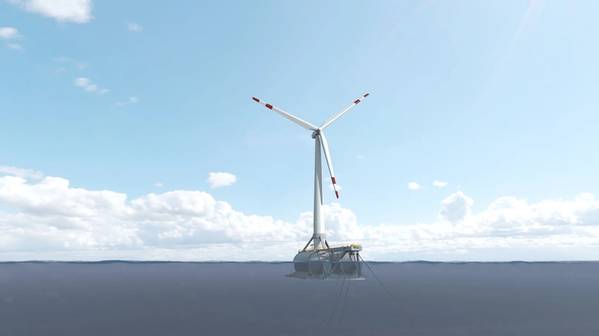
Engineering services Worley has recently completed the accessibility design assessment for Saitec Offshore Technologies’ ‘DemoSATH’ floating wind turbine, which will be deployed off the Basque Coast in northern Spain.
DemoSATH is a 2 MW turbine, mounted onto a concrete floating foundation. Once connected to the grid, DemoSATH is expected to supply electricity to almost 2,000 homes.
The project will test the very first floating wind foundation connected to the Spanish grid using SATH (Swinging Around Twin Hull) technology.
"The project has benefited from Worley’s extensive technical expertise, acquired through decades of project experience in the oil, gas and offshore wind industries. Worley provided advisory services pertaining to the access, inspection and maintenance of boat landings and turret access design assessments. Worley also consulted on access materials, handling scenarios depending on the weather conditions, different human factors and Health, Safety, Security and Environment (HSSE) requirements," Saitec said."
"Maximizing availability of floating wind is one of our ultimate goals and having the opportunity to collaborate with Worley and taking advantage of their know-how and expertise serves as a stepping-stone towards a safe and optimal operation of SATH platforms,” said David Carrascosa, Chief Technology Officer, Saitec Offshore Technologies.
The pilot construction in the Port of Bilbao, will start in Q3 2020, and once installed and connected to the grid, a two-year operating phase will follow. The ultimate objective is to gather experience to implement improvements and optimizations for future commercial projects.
According to Global Wind Energy Council, floating offshore wind has the potential to increase offshore wind resources by a factor of ten and will play an increasingly important role in expediting the energy transition at the necessary rate to maintain a 1.5°C pathway in line with IPCC recommendation. The council sees the potential of up to 19GW of floating wind capacity to be installed by 2030, depending on the speed that cost reduction can take place.
To speed up the development of floating wind sector, Global Wind Energy Council has earlier this month launched a Floating Offshore Wind Task Force. The task force will focus on accelerating the growth of the floating offshore wind sector by developing a common view to address barriers to growth and provide best practices.
Per, GWEC, as of the end of 2019, there was 65.7 MW of floating offshore wind capacity installed globally, As of the end of 2019, 65.7 MW of floating offshore wind capacity was installed globally, in the UK, Japan, Portugal, Norway and France.
Watch the recording of World Energy Report's Offshore Wind Webinar "Outlook for Offshore Wind Power: The Frontier of Future Energy"